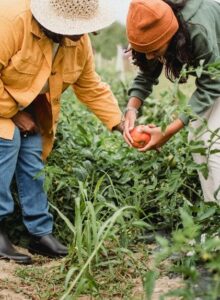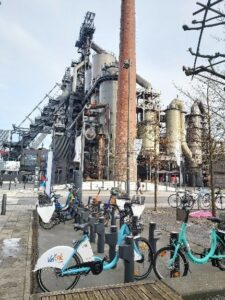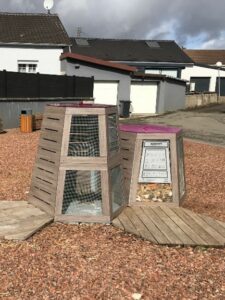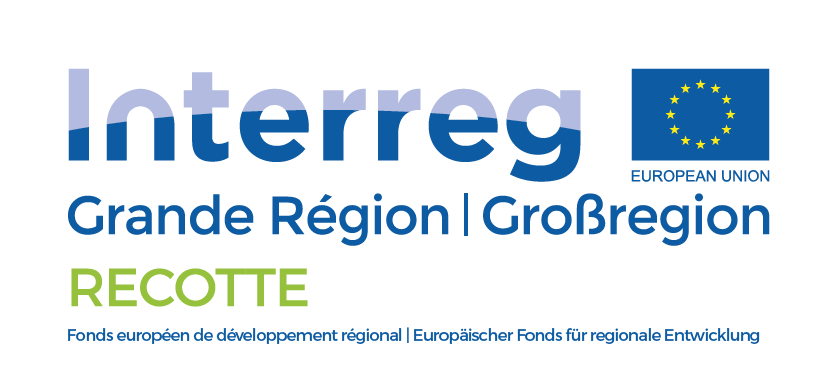
The RECOTTE project will tackle the issue of ecological transition in a cross-border, binational context within contiguous communities that straddle national frontiers.
Specifically, the project will focus on three cross-border communities in the Luxembourg metropolitan area that are currently undergoing redevelopment and are where social fissures and inequality are most significant: Agglomeration Alzette-Belval, Aubange/Pétange/Messancy/Käerjeng and Arlon/Steinfort. Each of these three international communities have different characteristics and needs when it comes to cross-border cooperation.
These study cases will enable the methodology to be tested on three sufficiently distinct and diverse areas: one area of reconstruction, one area of consolidation and one area under construction. These are areas of experimentation, the results of which can subsequently be applied to a wide range of transnational cooperation within the Greater Region.
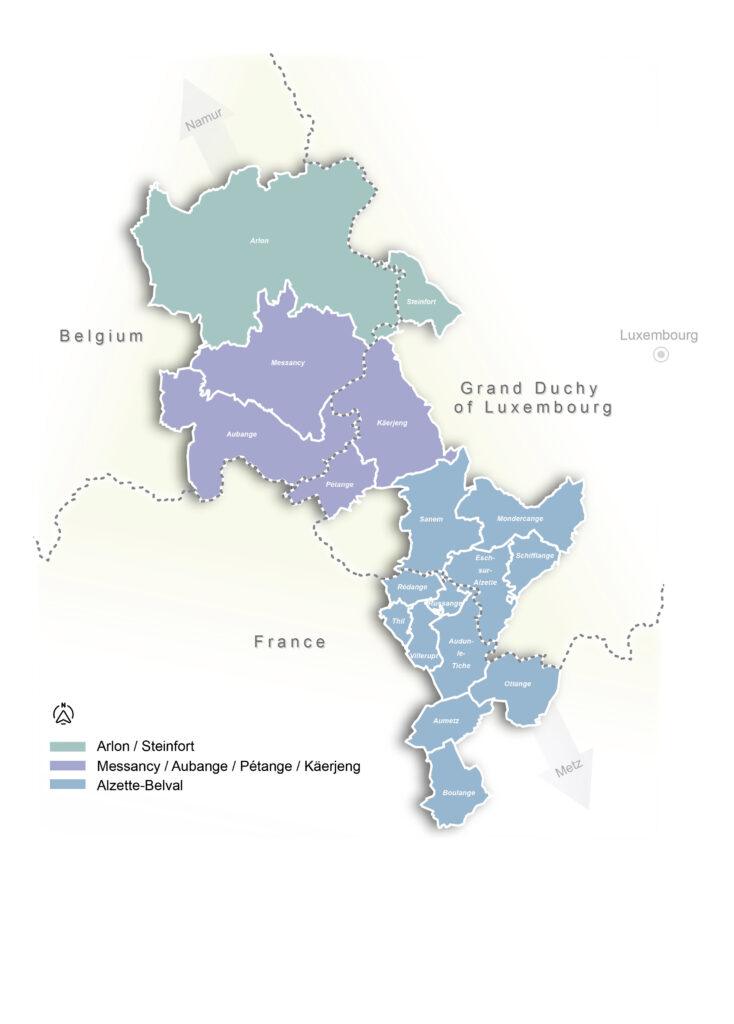
Arlon/Steinfort
Messancy / Aubange / Pétange
Agglomeration Alzette-Belval
Number of municipalities: 2
Total area: 130.76 km2
Total population: 35,540
The first area of study consists of two municipalities: Arlon (Belgium) and Steinfort (Grand Duchy of Luxembourg).
Source of the Semois river and capital of the Belgian province of Luxembourg, Arlon is one of the oldest towns in Belgium. It is a administrative and commercial capital of regional standing. Steinfort is a small town in the Luxembourg canton of Capellen and is a recognised Centre of Development and Attraction (CDA). It is located on the border with Belgium and acts as a gateway to what is known as the Valley of the Seven Castles.
It is important to note the demographic and geographic differences between the two municipalities: Arlon is almost six times more populous than Steinfort (30,081 inhabitants compared to 5,429 inhabitants) and roughly ten times larger in terms of area (118.64 km compared to 12.16 km). There is also a significant difference when it comes to population density: Arlon is relatively sparsely populated compared to Steinfort (251 inhabitants per km² compared to 462 inhabitants per km²).
From an ecological transition perspective, there are local dynamics on both sides of the border – be it citizen participation in Arlon or mobility and energy generation in Steinfort. Nevertheless, the international border remains an obstacle to realising municipal transition initiatives.
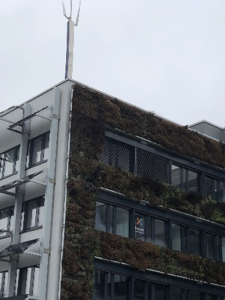
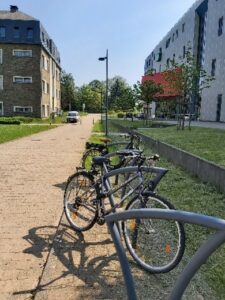
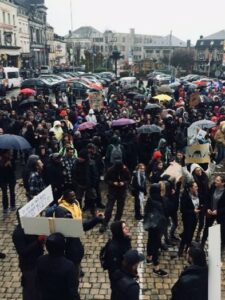
Number of municipalities: 4
Total area: 143.63 km2
Total population: 44,986
The second area of study consists of four municipalities: Messancy and Aubange in Belgium and Pétange and Käerjeng in Luxembourg.
This area is relatively contiguous in terms of urbanisation. It is a former centre of the steel industry, and the “red rocks” between Athus and Pétange also used to be a mining area. The region has already been the subject of an initiative to revitalise and repurpose former steelmaking sites on the three sides of the border (Belgium, France and Luxembourg) as part of the Pôle Européen de Développement project. In 1985, the three countries signed an agreement to create 8,000 jobs in the region and clear up, treat and prepare almost 500 hectares of brownfield sites. Over the past few years, cross-border cooperation has begun to run out of steam due to a lack of solid partnerships and long-term funding.
From a demographic perspective, Messancy has 8,266 inhabitants, Aubange 17,145, Pétange 19,574 and Käerjeng 10,541. Pétange is significantly more densely populated (1,683 inhabitants per km²) compared to Messancy, Aubange and Käerjeng. That being said, Aubange is the most densely populated community in the Belgian province of Luxembourg (371 inhabitants per km²).
Ecological transition projects in each of these municipalities and in a cross-border context focus predominantly on energy and soft mobility, but also encompass areas such as waste management, industrial pollution and the preservation of watercourses.
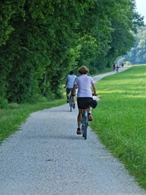
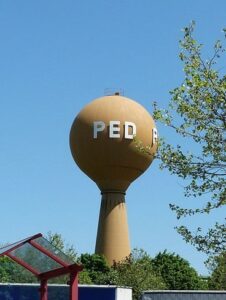

Number of municipalities: 12
Total area: 141 km2
Total population: 90,515
The third area of study is composed of four municipalities in Luxembourg (Sanem, Mondercange, Esch-sur-Alzette and Schifflange) and eight French municipalities (Rédange, Russange, Thil, Villerupt, Audun-le-Tiche, Ottange, Aumetz and Boulange). The French municipalities are grouped into the CCPHVA administrative area (Communauté de Commune Pays Haut Val d’Alzette).
This cross-border area has a greater and denser population than the first two areas. The inhabitants are distributed as follows: two thirds on the Luxembourg side (63,746) and one third on the French side (26,769). In the early 2000s, this area saw the implementation of the Belval urban project on the Luxembourg side, which was geared towards creating a metropolitan centre with 20,000 jobs and 5,000 residents. Located directly on the border, this urban development project resulted in a partnership between French and Luxembourg authorities centred on a European Grouping for Territorial Cooperation (EGTC), which serves as a platform for sharing information, developing strategies and making decisions involving national and local policymakers. The EGTC’s goal was to foster the creation of a sustainable, transnational community.
Numerous ecological transition measures have already been initiated in the Luxembourg and French municipalities, including the Transition Minett initiative, community garden projects and waste management and soft mobility programmes.
